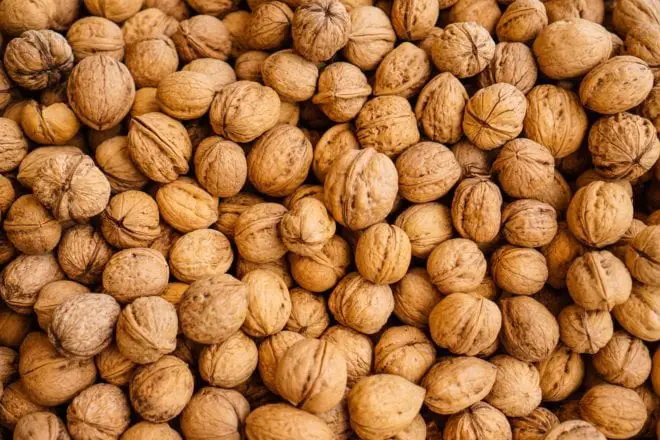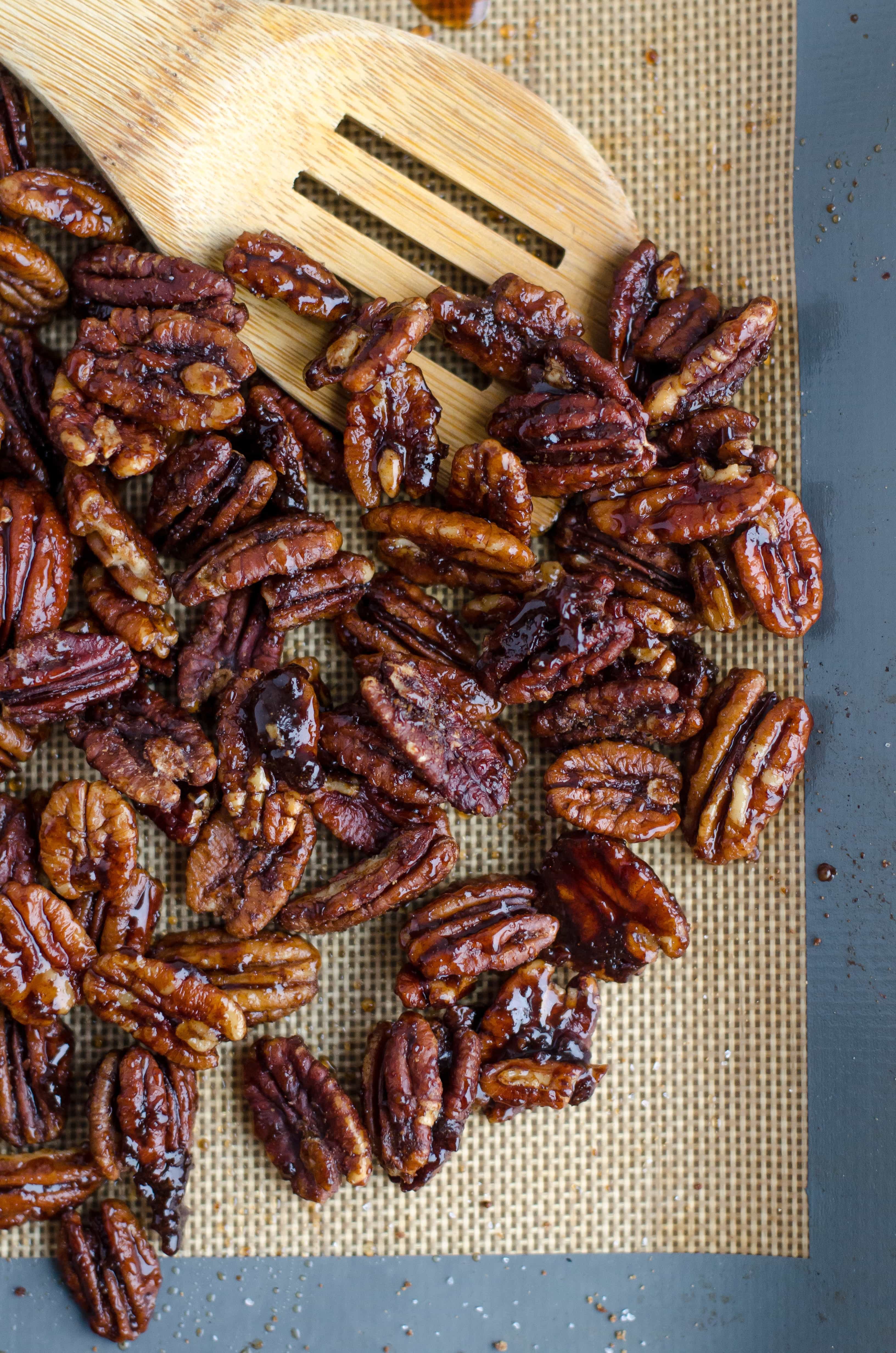In a culinary sense, a nut is defined as any large, oily kernel found within a shell. It is a good source of important nutrients and energy. Generally, nuts have high oil content, proteins, vitamins, and minerals. Culinary nuts are what we usually use in cooking. These could be eaten raw, sprouted, and roasted. You can even dry nuts as a snack. Nut oils are also used in cooking.
Table of Contents
Nuts, Seeds, Kernel, Beans, and Grains
Sometimes, we get confused about how we distinguish nuts, seeds, beans, and grains. Try asking someone how they would define or differentiate each and they’ll get stuck somewhere.
Generally speaking, they are all seeds. The other terms are just characteristics of the seed. For culinary purposes, there are no specific rules on how to differentiate these terms. Usually, it is how we use them that we categorize them as such.
Grains refer to the seeds of grass food crops like wheat, barley, oats, corn. Today, it can also refer to other similar food crops but not necessarily grass seeds such as soy, rice (risotto), buckwheat, quinoa, etc.
Beans refer not only to the broad beans like the fava beans but also refer to other plants that may not be botanically the same with the broad beans like soy, garbanzo, coffee, legumes, castor, and cocoa.
A kernel is usually referred to as the center part of a nut. Today, it is used to refer to the individual seeds of corn, wheat, buckwheat, and barley.
As we defined nuts earlier, there are some culinary nuts that are not botanically speaking true nuts. For example, a peanut is not a nut, it is a legume.
Culinary Nuts
A famous food website listed the common nuts used in cooking. Each nut has its own distinctive characteristics that bring out its flavor and provides the texture and the crunch to the dish.
- Almonds. This nut has a mild sweet flavor and can be sold whole, sliced, and slivered. It could also be blanched with or without its skin. It could be pulverized to become flour or could be magnified in products like almond extract or almond milk.
- Cashews. This crescent-shaped nut is native to South America but it made its way to Asian cuisines. Its neutral flavor makes it a good ingredient that provides texture or crunch to a recipe. Also an almost perfect substitute to other nuts like pecans and walnuts when these are not available.
- Hazelnuts. The first thing that comes to mind when you hear the name hazelnut is Nutella. True, because this round nut is the main ingredient of this beloved sweet spread. Its woodsy note brings out the chocolate’s nuttiness. But to enhance the hazelnut’s real flavor, you need to roast them and remove the bitter skin. Also, roasting increases its crunchiness making it ideal to provide texture in soups.
- Macadamia Nuts. Originally from Hawaii and Australia, these large nuts are rich with an almost buttery flavor. When chopped, they go well with fish and baked goods like cookies and pies.
- Peanuts. As we have mentioned earlier, a peanut is technically a legume. But because of its culinary use, it is considered a nut. This legume is available all-year-round, affordable, and high in protein. 1 cup has 40 grams of protein. Once roasted, peanuts bring out its own earthy flavor and provide texture and crunch to any dish.
- Pecans. Originally from North America, this nut is sweeter than the walnut and is used mainly in baking and a lot of traditional Southern US dishes.
- Pine nuts. Also called Pignoli, these are harvested from pine trees. The Italian pine nuts are longer and more slender. Its mild pine flavor and soft chewy texture make it more pleasing to the palate when toasted or included in pesto.
- Pistachios. Native to Western Asia and the Middle East, this seed is a key ingredient in dishes like baklava, ma’amoul, haroseth, and halvah. Its color and flavor also made its way to ice cream.
- Walnuts. This nut is one of the few nuts that you can find available in its shell. The ruffled flesh is high in tannins which give its slightly bitter dry taste. However, this is what makes walnuts a good baking ingredient among the culinary nuts.

How to Soak and Dry Nuts
Biomedically speaking, nuts, or seeds for that matter, contain enzyme inhibitors because enzymes are unstable. So these enzymes are locked inside the seed until they are needed at germination and as the plant grows. Therefore, to mimic that kind of action in the kitchen, we need to soak the seeds or nuts so it could germinate.
Soaking them in water would tell the seeds to soften up and get ready to grow. Thus, the enzyme inhibitors set free the enzymes the plant (and humans) need. Consider soaking as a pre-treatment for nuts before drying. Because if nuts (or seeds, beans, kernels, and grains) are not soaked, the enzyme inhibitors may affect our digestion.
Raw Pecans & Walnuts
- Add 2 teaspoons of sea salt to warm water.
- Soak 4 cups pecan or walnuts in warm water for 7 to 24 hours.
- Drain the water.
- Rinsing is optional if you want to have that saltiness on the nuts.
- Spread them on dehydrator trays.
- Set the dehydrator at 105°F-150°F for 12 to 24 hours, turning the trays (or nuts) occasionally.
Raw Almonds
- Add 1 tablespoon of sea salt to warm water.
- Soak 4 cups almonds in warm water for 7 to 24 hours.
- Drain and rinse.
- Again, rinsing is optional if you prefer the saltiness on the nuts.
- Spread them on dehydrator trays and sprinkle with honey or other flavorings if you wish.
- Set the dehydrator at 105°F to 150°F for 12 to 24 hours, turning the trays or nuts occasionally. If the almonds are already pasteurized or treated, soak them up to 6 hours only.
Cashews
“Raw” cashews are not really raw. They have been heated at 350°F while in their shell to neutralize a toxic oil called cardol. Therefore, there’s no need to dry them. However, soaking them makes them more digestible.
- Add 1 tablespoon of sea salt to warm water.
- Soak 4 cups cashews in warm water for no more than 6 hours.
- Drain and rinse.
- Place them on a stainless steel cookie sheet, sprinkle with salt, and bake at 200°F to 250°f until dry, turning the tray or the nuts occasionally.
Peanuts
- Add 1 tablespoon of sea salt to warm water.
- Soak 4 cups of raw peanuts in warm water 7 to 24 hours.
- Drain and rinse. You may not rinse if you prefer the saltiness on the nuts.
- Spread on dehydrating trays and set the dehydrator at at 105°F to 150°F for 12 to 24 hours, turning the trays or the nuts occasionally.

Uses
How do we use dried nuts? Let us count the ways:
- Chop them in all recipes that call for nuts
- Grind them to turn them into nut butter
- Mix them with dried fruits to turn them into trail mix
- Sprinkle them on salads, porridge, and ice cream
Nutritional Value
Since nuts are essentially seeds, they contain the nutrients required for the plant’s development and growth. Nuts contain unsaturated and monounsaturated fats like linoleic and linolenic acids, vitamins, and essential amino acids. Nuts are also good sources of vitamin E, B2, folate, fiber, magnesium, phosphorus, potassium, copper, and selenium.
Final Thoughts
Nuts are categorized differently from vegetables and fruits in culinary use. They contain enzyme inhibitors that may affect our digestion that is why we need to soak them first before drying. How to dry nuts is pretty much easy.
If you are considering food dehydration at home, why not check out the different food dehydrators we featured here?

